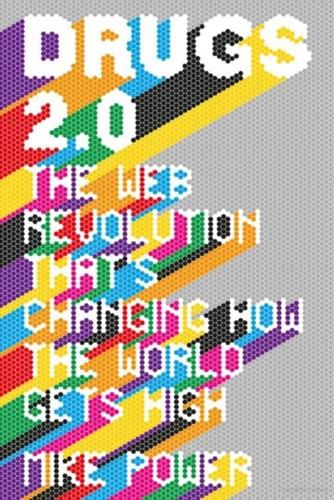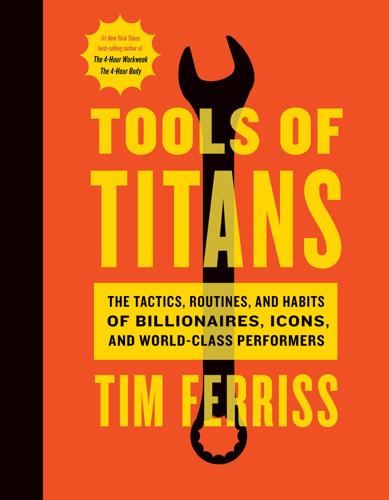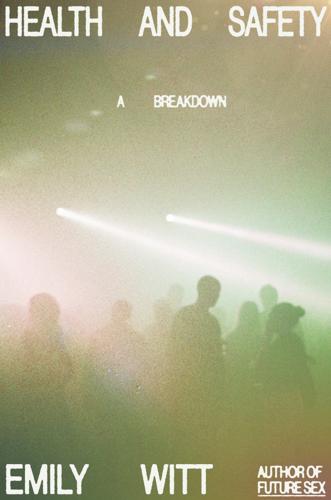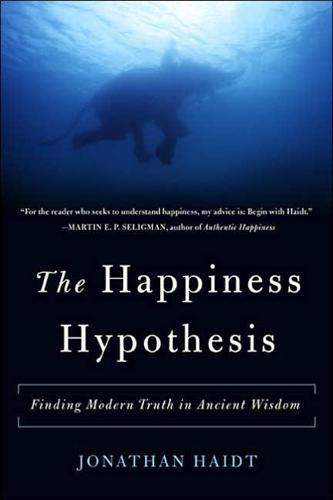
Drugs 2.0: The Web Revolution That's Changing How the World Gets High
by
Mike Power
Published 1 May 2013
It is also a valuable first reference point for parents, teachers and poison control toxicologists. Just as TIHKAL and PIHKAL became required reading for many in the counterculture in the 1990s, Erowid became a resource for any early web user interested in drugs. In 1996, with the Shulgins’ permission, the second half of PIHKAL was published online by Lamont Granquist, an early net advocate, who had created the Hyperreal Drug Archives, an early collection of files and information about psychoactive drugs. In 1999, Erowid moved on to the Hyperreal server and incorporated the archives there into Erowid, including PIHKAL and TIHKAL. While this was no real surprise to any informed observer, it still felt like a revolutionary act in an information war, which, in some respects, the war on drugs had become.
…
With his unruly beard, ready grin, colourful baggy shirts and loping gait, the endlessly punning chemist worked in his ramshackle garden shed laboratory, surrounded by thickets of glassware and dangling, vine-like tubing, the air thick with volatile gases and the thunderous chords of his beloved Rachmaninov. Eventually, sensing a change in the attitude of the DEA towards his work, Shulgin published his entire body of knowledge in two seminal works of psychedelic chemistry: PIHKAL (Phenethylamines I Have Known and Loved): A Chemical Love Story, in 1990 and, seven years later, TIHKAL (Tryptamines I Have Known and Loved), which covered the other major class of psychedelics. Psychedelic pioneer Timothy Leary has compared PIHKAL to Charles Darwin’s On the Origin of Species,5 and, while most of Leary’s grandiloquence can be safely disregarded, it’s arguable that on this he was right. The DEA did not share that view, and they raided Shulgin’s lab in 1994, accusing him of possession of compounds he was unauthorized to own.
…
Where a cook uses flour and fat and heat, a chemist such as Shulgin might use an essential oil, such as oil of parsley, or safrole, as a precursor, its similarity to pre-existing drug structures, such as amphetamine, making fewer chemical reactions necessary. Indeed, in PIHKAL Shulgin identified ten amphetamines that were closely linked to essential oils and he deliberately chose precursors that were, back then, available without a great deal of trouble. ‘What are these relationships between the essential oils and the amphetamines?’ he wrote. ‘In a word, there are some ten essential oils that have a three-carbon chain, and each lacks only a molecule of ammonia to become an amphetamine.’6 Since their publication PIHKAL and TIHKAL have served as guidebooks to the new chemical terrain, their pages revealing in detail the doses of new and unknown drugs.

Stealing Fire: How Silicon Valley, the Navy SEALs, and Maverick Scientists Are Revolutionizing the Way We Live and Work
by
Steven Kotler
and
Jamie Wheal
Published 21 Feb 2017
But it was a pair of different books that came to define Shulgin’s legacy. The first was PiHKAL, short for “Phenethylamines I Have Known and Loved,” a reference to the class of psychedelics containing mescaline and 2C-B. Cowritten with his wife and published in 1991, PiHKAL was divided into two parts. Part One contained a fictionalized autobiography of the couple. Part Two was a detailed description of 179 psychedelics and included step-by-step instructions for synthesis, bioassays, dosages, duration, legal status, and commentary—that is, everything a would-be psychonaut needed for takeoff. The second book, TiHKAL, came out in 1998, with the acronym standing for “Tryptamines I Have Known and Loved,” and referring to drugs like LSD, DMT, and ibogaine.
…
Pop the pill, take the hit, and pretty soon you’re undeniably someplace else. This ease of access means more people can visit these states more often and collect more data. As a result, they no longer have to treat one person’s epiphany as written-in-stone Truth. Not long after the publication of PiHKAL and TiHKAL, online message boards and forums began popping up to provide clandestine recipes for kitchen chemists and detailed maps for explorers of inner space. Referring to Erowid,27 one of the largest and best-regarded of these online repositories, author Erik Davis writes: “By far the most entertaining vault contains thousands of ‘experience reports’ logged by psychonauts flying high (and taking notes) on exotic cacti, prescription pharmaceuticals, and newfangled phenethylamines. . . .
…
See also Musk, Elon testing/experimenting, self, 120, 121, 123, 184, 207 testosterone, 98, 112 THC (drug), 133 therapeutic programs, 29–30. See also specific program Thiel, Peter, 163 Think and Grow Rich (Hill), 80 thinking lateral, 45, 117–18 See also cognition; precognition Thompson, Hunter S., 189, 209 3D experiences and Jones art, 145 and Siegel-Page technology, 152 3D printing, 132, 133, 222 TiHKAL (Shulgin), 122, 128 Tillotson, John, 73 time and altered states to altered traits, 91–93 and brain, 40 and flow, 4–5 importance of, 39–40 lack of, 39–41 See also Ecstasis Equation; timelessness Time magazine, 33, 82 The Time Paradox (Zimbardo), 40 timelessness benefits of, 42 “known issues”/downsides of, 203–5 and learning, 220 and misuse/dangers of ecstasis, 193 and open-sourcing ecstasis, 200 as STER category, 39–41, 45 and Tolle, 76 and training for nonordinary states, 203–5 See also STER tobacco, 29, 62.

This Is Your Country on Drugs: The Secret History of Getting High in America
by
Ryan Grim
Published 7 Jul 2009
Shulgin first collected his research in 1991 in the book Phenethylamines I Have Known and Loved: A Chemical Love Story, coauthored with Ann and known as PiHKAL. Shortly thereafter, his cooperative relationship with the DEA—he had a license to work with Schedule I drugs and in exchange gave expert testimony for the feds in court—came to an end. The DEA raided his lab, discovered record-keeping irregularities, and revoked his license. Shulgin was undeterred, and in 1997, he and Ann self-published Tryptamines I Have Known and Loved: The Continuation, or TiHKAL. The two books combined are nearly two thousand pages long and include detailed recipes for the production of hundreds of drugs. PiHKAL has sold more than fifty thousand copies and TiHKAL is in its second printing, with well over twenty thousand copies in circulation, says Shulgin.
…
PiHKAL has sold more than fifty thousand copies and TiHKAL is in its second printing, with well over twenty thousand copies in circulation, says Shulgin. They’ve both been translated into Spanish and Russian, and both are available in online versions through Erowid. PiHKAL and TiHKAL don’t stop at recipes. They also suggest some of the nearly limitless variations that could be made to each compound to slightly alter the experience it induces, and they include a personal account of drug experimentation. In the entry for 5-methoxy-diisopropyltryptamine, aka Foxy, Shulgin writes that while he was taking the drug, everything “was shaded with eroticism.
…
taxation Harrison Act Marijuana Tax Act on medical marijuana tear gas teenagers advertising campaigns and drug testing of lifestyle and rebelliousness and surveys of “Teens Use Internet to Share Drug Stories” (USA Today) Temmler temperance movement Tendler, Stewart tetrahydrocannabinol (THC) T family chemicals Thomas, Clarence Thomas, Tommy Thompson, Hunter S. Thorazine Time tobacco Tocqueville, Alexis de Toledo, José Hernández Torgoff, Martin tranquilizers treatment programs, for drug use tripping. See also LSD (acid) “Trouble in Paradise” (Time) tryptamine Tryptamines I Have Known and Loved (TiHKAL) (Shulgin, Shulgin) 2C-T-7 Tyler, Helen E. Unidad Móvil de Patrullaje Rural (Mobile Rural Patrol Unit, UMOPAR) Uniform Crime Report (1980) (FBI) United Nations International Drug Control Programme Morales at Office on Drugs and Crime World Drug Report (2007) United States. See also foreign policy (U.S.); individual names of government agencies; individual names of presidents University of Iowa University of Michigan.

Tools of Titans: The Tactics, Routines, and Habits of Billionaires, Icons, and World-Class Performers
by
Timothy Ferriss
Published 6 Dec 2016
Origins and Dangerous Books “There are two great beings who invented psychedelics: God and Sasha Shulgin. I think Sasha may have invented more, but there are literally hundreds that he played with and looked at.” Sasha wrote two books about his creations and experiments: Pihkal: A Chemical Love Story (Pihkal = Phenethylamines I Have Known and Loved) Tihkal: The Continuation (Tihkal = Tryptamines I Have Known and Loved) The two volumes are filled with instructions for how to synthesize these various molecules. He said he put these books out so that the government couldn’t stop people from experimenting. Personally, I prefer the whole-plant sources that have been used for millennia.
…
Heinlein), The Singularity Is Near (Ray Kurzweil), Atlas Shrugged (Ayn Rand), Stone Soup story DiNunzio, Tracy: Good to Great: Why Some Companies Make the Leap . . . and Others Don’t (Jim Collins), The Everything Store: Jeff Bezos and the Age of Amazon (Brad Stone) Dubner, Stephen: For adults: Levels of the Game (John McPhee); for kids: The Empty Pot (Demi) Eisen, Jonathan: National Geographic Field Guide to the Birds of North America (Jon L. Dunn and Jonathan Alderfer) Engle, Dan: Mating in Captivity: Unlocking Erotic Intelligence (Esther Perel), The Cosmic Serpent (Jeremy Narby), Autobiography of a Yogi (Paramahansa Yogananda) Fadiman, James: Pihkal: A Chemical Love Story; Tihkal: The Continuation (Alexander Shulgin and Ann Shulgin) Favreau, Jon: The Writer’s Journey (Christopher Vogler and Michele Montez), It Would Be So Nice If You Weren’t Here (Charles Grodin), The 4-Hour Body (Tim Ferriss), The Hobbit (J.R.R. Tolkien), Kitchen Confidential (Anthony Bourdain) Foxx, Jamie: Without Sanctuary: Lynching Photography in America (James Allen) Fussell, Chris: Gates of Fire (Steven Pressfield), Steve Jobs; The Innovators (Walter Isaacson) Fussman, Cal: One Hundred Years of Solitude (Gabriel García Márquez), Between the World and Me (Ta-Nehisi Coates), Speak Like Churchill, Stand Like Lincoln: 21 Powerful Secrets of History’s Greatest Speakers (James C.

Health and Safety: A Breakdown
by
Emily Witt
Published 16 Sep 2024
As I worked on my first book, about sexuality, I was already planning to write a book about drugs. My bookshelves filled up with literature published by New Age imprints. I read the canon: Be Here Now, The Electric Kool-Aid Acid Test, The Doors of Perception, The Varieties of Religious Experience, PiHKAL. I read self-published books and esoteric novels, like William Craddock’s forgotten LSD bildungsroman Be Not Content and Krystle Cole’s Lysergic, an account of the LSD bust in Kansas, which happened in an underground missile silo. I listened to the lectures of Terence McKenna. I read the correspondence between William Burroughs and Allen Ginsberg about trying yage, or ayahuasca.

How to Be Idle
by
Tom Hodgkinson
Published 1 Jan 2004
Schlosser, Eric, Fast Food Nation: What the All American Meal is Doing to the World (London, Penguin, 2002) Schor, Juliet B. , The Overworked American: The Unexpected Decline of Leisure (New York: Basic Books, 1 99 1 ) . Self, Will, ' In Conversation with . . . ' , Idler 2 (1993) . Shulgin, Alexander, and Ann Shulgin, PIHKAL: A Chemical Love Story (Berkeley, Calif. : Transform Press, 1 99 1 ) . Smith, Arthur, ' Questionnaire ' , Idler 3 2 (2003) . Strathern, Paul, Mendeleyev 's Dream: The Quest for the Elements (London: Penguin, 200 1) . Stevenson, Robert Louis, ' An Apology for Idlers ' and ' Ordered South ' , in Virginibus Puerisque and Other Papers (London: Kegan Paul, 1 88 1 ) .

The Happiness Hypothesis: Finding Modern Truth in Ancient Wisdom
by
Jonathan Haidt
Published 26 Dec 2005
Predicting adolescent cognitive and self-regulatory competencies from preschool delay of gratification: Identifying diagnostic conditions. Developmental Psychology, 26, 978—986. S h o r e , B. ( 1 9 9 6 ) . Culture in mind: Cognition, culture, and the problem of meaning. Ne w York: Oxford University Press. Shulgin, A. (1991). PIHKAL: A chemical love story. Berkeley: Transform Press. Shweder. R. A., Much, N. C., Mahapatra, M., 8c Park, L. (1997). T h e "big three" of morality (autonomy, community, and divinity), and the "big three" explanations of suffering. In A. Brandt 8c P. Rozin (Eds.), Morality and Health (pp. 119-169).